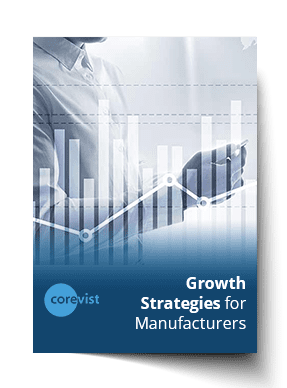Share
Author
George Anderson
Share
Leverage data from your digital customer portal for growth
You can’t grow without intelligence.
So where do you get intelligence on your channel partners’ preferences? Their buying patterns, their seasonal shifts, products frequently bought together, and more?
While you can pull reports from SAP to cover these needs, a digital customer portal offers far more accessible visibility into this kind of data. For manufacturers, the trick is knowing where to find the right data—and then, knowing how to apply it.
Here are 3 strategies which use data analysis to gain insight into business performance and facilitate growth.
1. Leverage digital portal data to measure customer engagement
SAP offers many ways to get sales data. Your IT team can build out practically any report you want, whether it’s from SAP ERP, CRM, Fiori, etc.
But sales data from non-self-service channels will always lack one critical piece of the data puzzle: You can’t measure user engagement.
This is where a digital customer portal offers an advantage in BI (business intelligence) which no other channel does. Not only can you see all kinds of sales data (product revenue, total revenue, trends by time period) and filter it many ways, you can also get data on how your channel partners interact with your digital portal. You can actually quantify the interest which your customers have in your digital content.
With the right portal solution (and integration to Google Analytics), you can see things like:
- Product pages associated with longest time-on-site and largest order sizes
- Most common user paths in navigating the portal, and products most commonly viewed next
- Tasks which bring channel partners to the portal most often (e.g. price/inventory lookups, paying off invoices, routine reorders, etc.)
NEW Report:
Growth Strategies for Manufacturers
Every manufacturer needs to grow in the digital age. Here’s the ultimate guide to growth strategies for manufacturers. Read now.
2. Leverage digital portal data to understand and predict seasonality
SAP ERP has data on product seasonality, but BI (business intelligence) reporting for the business user isn’t the ERP’s strong suit. If you’re from the business side, you may need the help of IT to run a report, and that dependency adds friction to the process of reviewing KPIs.
A digital customer portal, with Google Analytics integrated and e-commerce tracking set up, gives you a dashboard for product/sales seasonality that’s much easier to consume.
Google Analytics allows you to compare any date range with any other date range. You can select previous period, previous year, or set your own ranges. This empowers you to compare all sorts of KPIs over time—things like:
- Revenue
- E-commerce conversion rate
- Transactions
- Average order value
- And much more
In addition, you can filter any one of these metrics further by device type, country of origin, or a custom segment of your own creation. The possibilities are endless—and it’s far easier to get this kind of data quickly in Google Analytics than run a report in SAP.
All Corevist solutions include full integration with Google Analytics for e-commerce tracking. In Corevist, you can analyze what your customers do, when they do it, and emerging trends in that data. This empowers you to connect marketing efforts directly to revenue.
3. Leverage digital portal data to understand customer demographics
A digital customer portal empowers you to understand how your customers prefer to do business with you. You can use it to learn things like:
-
- What type of device does the lion’s share of your revenue come from—desktop, tablet, or mobile?
- Are there specific browsers that convert highly—or consistently don’t convert?
- How does your aggregate mobile conversion rate compare to desktop and tablet? How does it compare to benchmarks in your industry?
- Is your conversion rate higher in some countries than in others? (If so, maybe your product messaging is tailored well to one audience, but not the other)
Do average time spent on the site and average order value correlate with device type? If so, perhaps there’s room for improvement in your experience on a specific device type.
Want more?
Download our new report:
Growth Strategies for Manufacturers
We cover 18 growth strategies for manufacturers in the digital age. Read now.










